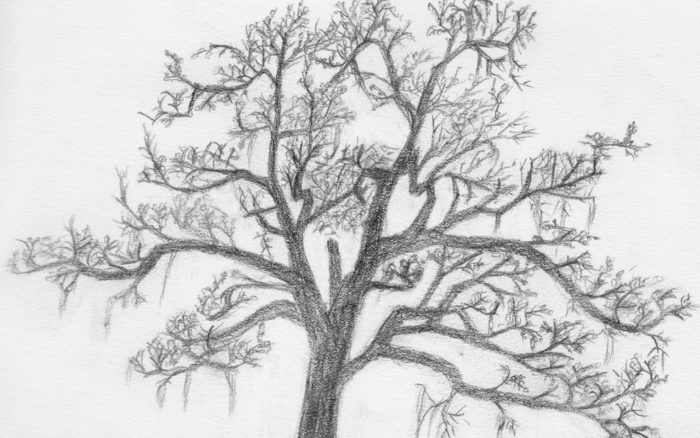| Valley Oak by Jesse Pizzitola |
Jean Bolen’s book, Like a Tree: How Trees, Women, and Tree People Can Save the Planet, reminds me of the trees I have loved in my life. The first was a tall cottonwood on the west end of my parent’s property that cast shade over the yard as the sun moved toward the horizon. As a child, I dreamed repeatedly of this tree that was then uprooted during a tornado when I was nine or ten. I remember climbing over the thick trunk of the upturned giant, examining branches and snags that I had studied from the ground all my early years: the one that looked like a monkey, the one, like a crow, aware something had changed forever.
Then there was the ash in the yard that was easy for a child to climb and had limbs that that were horses for my younger sister and me. Late summer, locust shells could be found on the branch from which our swing hung. This ash also shaded us while we played in the sandpile, and it died when I was in college.
I have written in a previous blog about the tree that saved my youngest son from rolling the car as new driver. I have not written about the two ancient valley oaks that we oriented our home by, the ones outside our dining room, nor about the three hundred year old valley oak by the old house that is so big you almost do not see it. Plum trees grow in cavities within it, as well as a large honey bee hive.
Then there are the forest trees: bay, coastal oak, interior live oak, black oak, madrone, the ones I do not know individually, but whose chorus greets me when I enter on the path, their leaves rustling hello!
But Bolen’s drawing our awareness to the “beingness” of non human living things is equally important, because it makes a difference in how we relate to them and perhaps even each other. Women are wired for this kind of relational behavior, as Bolen shows, and it may be up to the relational aspect of feminine in women and in men to bring the sea change necessary to save life on our earth as we know it.
